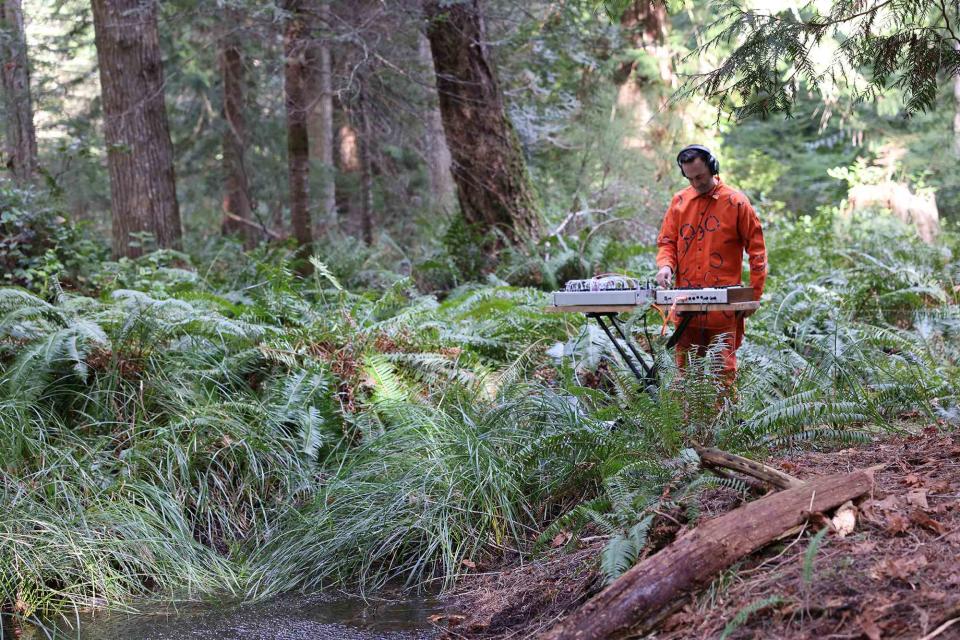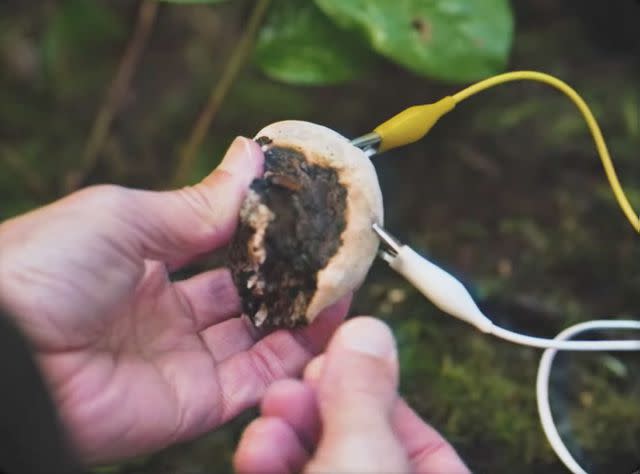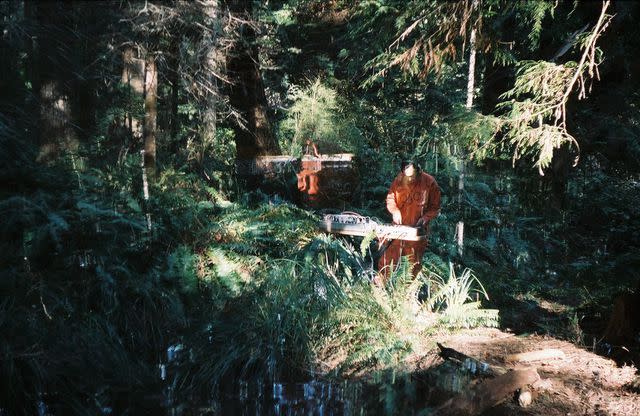Biologist-Turned-Musician Creates Sonic Magic With Bioelectricity From Fungi
Tarun Nayar coaxes melodic music from the unassuming organisms around us.

Mark Vonesch
What can't fungi do? Fungi come in all kinds of delightfully enchanting and bizarre forms and are the ultimate do-it-alls. Some of them are edible or medicinal; they help organic gardeners keep their gardens happy; they eat plastic, and they glow in the dark. Fungi-based biomaterials also have the potential to help us build more sustainable homes or make more eco-friendly products; heck, they can even talk to each other in their own secret language.
Not surprisingly, they can also make some interesting music, with a little help from Canadian musician Tarun Nayar, the mastermind who makes nature-inspired electronic music under the name Modern Biology.
Many of Nayar's beautiful music pieces, which he calls "organismic music," are created by recording the bioelectric pulses from living plants and fungi, which are then overlaid with Nayar's original compositions. By using a variety of modular synthesizers and small jump cables gently hooked up to fungi, Nayar is able to coax some of the most fascinating sounds out of these organisms.
Nayar, who is a trained biologist, also had formal training in Indian classical music since childhood. This synergistic blend of science and art has been a constant influence in his life. Just a few years back, he was touring full-time with a band, until the pandemic came and put an abrupt stop to that.
Nayar found himself with plenty of time on his hands, eventually spending more time in the northern part of British Columbia's Gulf Islands, building his own synthesizers, learning more about modular synthesis, and reading up on work from previous decades about using plants in musical compositions. As he tells Treehugger, he characterizes this new direction in his life as part of the same inspirational continuum of exploring the natural world around him:
"At it's very simplest, I think this practice is a direct way to 'connect' with the environment, and to remember nature is alive. Literally everything is surging with electricity and vibration, and this composition technique taps into that."
To create these ethereal musical compositions, Nayar explains that he uses equipment that converts plant and mushroom bioelectricity, as well as ambient electromagnetic radiation, field recordings, and other environmental sources into musical information.

Modern Biology
These small changes in a plant's electrical resistance are then translated into pitch and rhythm changes on a synthesizer. Ever the scientist, Nayar explains that this magical technique actually builds upon previous work:
"This is actually a pretty old technique that was developed about 20 years ago. The main melodic component to many of my compositions is this plant or mushroom bioelectric 'burbling,' and then I layer in other instruments and synths to try and capture the feeling of the moment. I'm almost always working and recording outside, so that's a big source of inspiration."
As a musician, Nayar gives mesmerizing live performances both indoors and out, and given the nature of working with living organisms, there have been moments where unexpected things have happened, as he recounts one surprising incident:
"I was at a retreat center called Hollyhock last summer, playing mushroom music right before [renowned mycologist] Paul Stamets spoke. I was tapped into a red belted polypore mushroom, which was being rather quiet. Its bioelectricity hadn't changed in some time. I started talking about how dangerous the idea of non-human consciousness is to our notions of human exceptionalism, and the mushroom just lit up! It went nuts. The whole audience was laughing and cheering as the mushroom joined the conversation. This was actually captured on video and you can find it on the Internet. It was wild."

Besides working with fungi, Nayar is also branching out to incorporate the bioelectric pulses from other candidates like papaya, mangos, watermelon, and cacti. Nayar is also fascinated with integrating the sounds of wild places like those found in old-growth forests, as he believes that it is important to channel as much awareness as possible to help protect these ecosystems.
Ultimately, Nayar believes that staying connected with Mother Nature is vital to keep hope and positivity in these difficult times, when some of us might feel deeply lonely and disconnected. In fact, he says that artists and musicians are uniquely positioned to light the way forward:
"Sometimes the weight of these topics can be too much for the conscious, rational mind to bear. If I try to comprehend what's happening to our climate and environment on a global scale, my brain can just shut down in protest. But somehow art and creativity can relate in a different way, emotionally. They can bring us together, instead of moving us further apart, and provide an opportunity for real insight and change. Our hearts have a much greater capacity than our minds. I think artists and musicians are uniquely situated to help us metabolize what's happening on the planet right now—like mushrooms!—to digest the indigestible. And hopefully, to inspire us to get our act together."

Johanna Robertson
Nayar's latest album, Field Notes, was recently released and is the product of two years of sonic experimentation. Nayar is currently embarking on a series of pop-up shows in public parks in LA, San Diego, Vancouver, Victoria, and Salt Spring Island, which will incorporate "part foraging, part park cleanup, and part deep listening." Exciting stuff—to find out more, check out Modern Biology's TikTok, Instagram, and YouTube.

